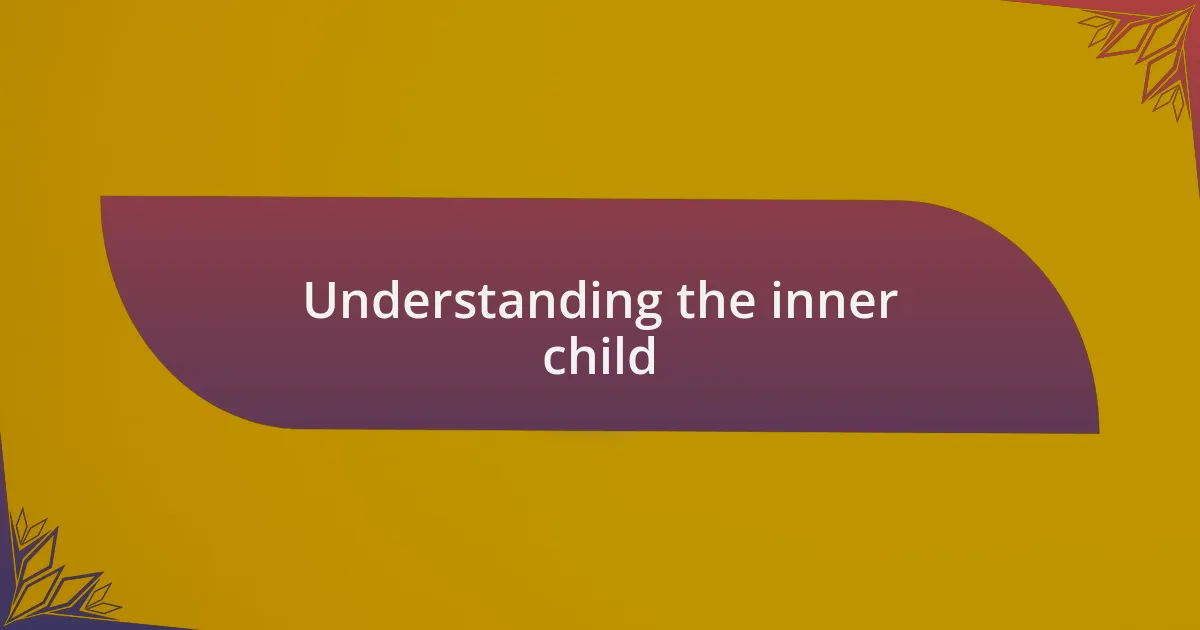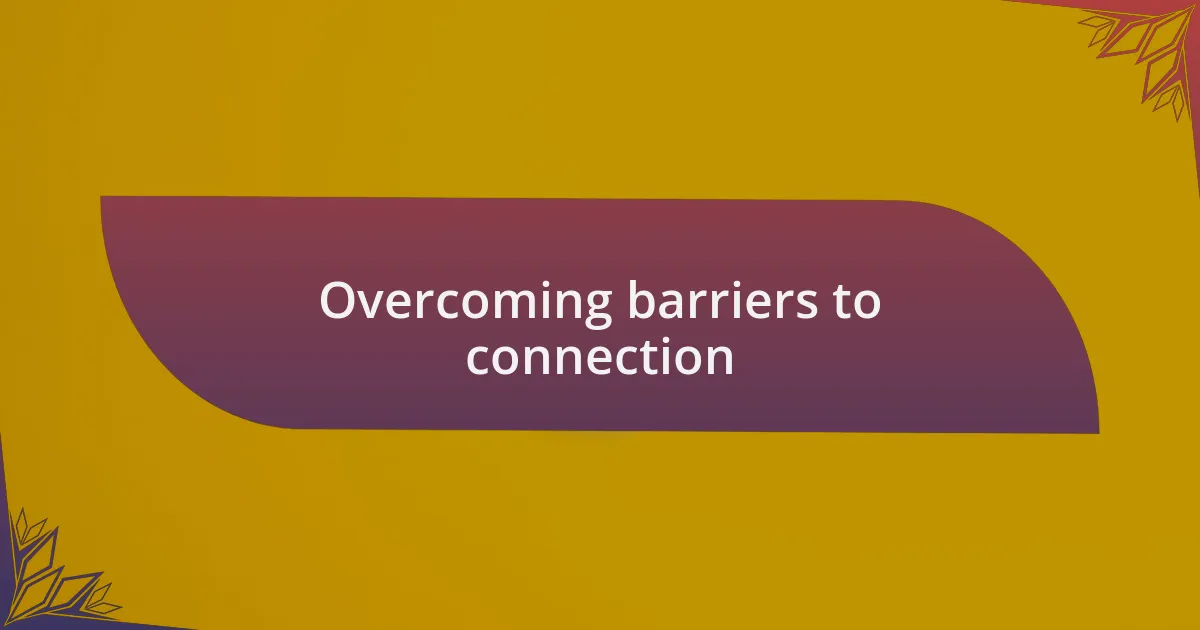Key takeaways:
- The inner child represents our connection to childhood experiences, emotions, and memories, impacting our emotional well-being.
- Nurturing the inner child through creative activities can promote joy and help heal emotional wounds.
- Emotional barriers, such as fear of vulnerability and societal expectations, often hinder connection with the inner child.
- Overcoming self-criticism allows for greater enjoyment and connection with one’s playful side, balancing childlike wonder with adult responsibilities.

Understanding the inner child
The concept of the inner child speaks to the part of us that is still connected to our childhood experiences, emotions, and memories. I often find myself wondering how the playful spirit I had as a child—filled with wonder—has faded over time. Have you ever felt that spark of joy when you rediscover an old hobby? That’s a direct connection to your inner child.
Understanding the inner child means acknowledging both the joys and traumas we experienced growing up. I recall a time when I struggled to take risks because of past failures. It wasn’t until I embraced my inner child that I learned to view challenges as opportunities for growth rather than potential failures. How often do we allow our childhood fears to dictate our adult lives?
Reflecting on my experiences has shown me that nurturing the inner child is essential for emotional well-being. For instance, I make it a point to engage in creative activities, like drawing or playing games, as a way to reconnect with that uninhibited part of myself. Isn’t it fascinating how these little acts not only bring joy but also help heal deeper emotional wounds?

Overcoming barriers to connection
It’s common to encounter emotional barriers when trying to connect with our inner child. I remember feeling a rush of anxiety when faced with the idea of being vulnerable again, as though putting myself out there would somehow expose old wounds. Have you ever hesitated to engage in something fun due to the fear of judgment? Overcoming this fear often requires us to acknowledge our feelings and remind ourselves that it’s okay to have fun.
Another barrier can be the influence of societal expectations. I used to think that engaging in playful activities was reserved for kids. However, I began to realize the importance of embracing childlike wonder as an adult. When I challenged that belief, I found a renewed sense of joy in life’s simple pleasures, like jumping in puddles after a rainstorm. Isn’t it refreshing to break free from the expectations that stifle our spontaneity?
Sometimes, the toughest barrier is internal. I’ve often battled with self-criticism, which can silence the joys of creativity. Learning to silence that inner critic was a journey in itself. I began to celebrate small victories, like enjoying a silly song or sharing a funny story with friends. Each time I let go, I felt a little more connected to that vibrant, playful side of myself. How liberating is it to realize that embracing the inner child can coexist with adult responsibilities?